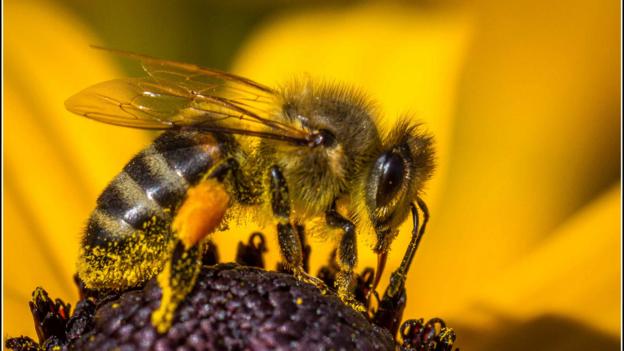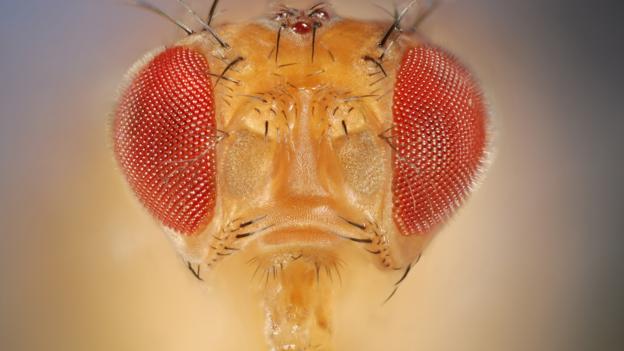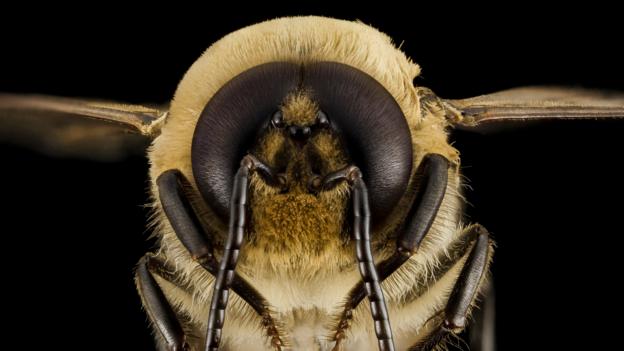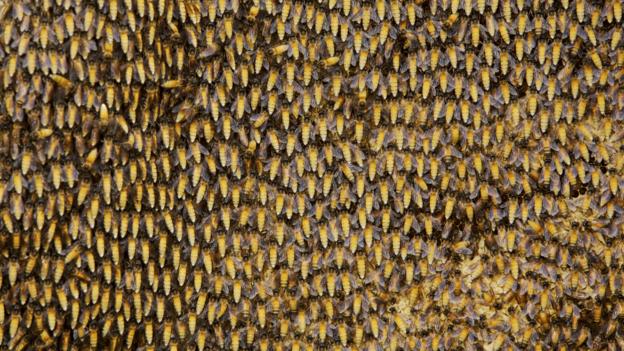You need to know-The insect that loves having sex
When it comes to sex, we tend to see the male of the species as the most promiscuous.
Yet, as the story of the record-breaking honeybee shows us, females can be just as likely to play the sex game.
We know that male animals seek to mate with multiple females to increase their chances of reproductive success. And we think that females are naturally pickier because they invest more energy in producing offspring and do not increase their chances of reproducing by having more than one partner. These are among the most deeply entrenched concepts of evolutionary biology. They’re also way off the mark.
The myth of the ardent, promiscuous male and the coy, choosy female is based on what some have called the Darwin-Bateman paradigm. In The Descent of Man and Selection in Relation to Sex, Charles Darwin, one of the founding fathers of the theory of evolution, described how males had “strong passions” and “eagerly pursue” females. “The female, on the other hand, with the rarest exceptions,” he wrote, “is coy, and may often be seen endeavouring… to escape the male”.
In 1948 English geneticist Angus John Bateman published a now famous experiment in which equal numbers of male and female fruit flies were placed in bottles. He chose flies with mutations such as curly wings, small eyes and thick bristles, to give him a way to determine the parentage of the resulting offspring. Bateman concluded there was greater variability in both reproductive and mating success among males than females, and that while mating with multiple partners increased the chances of a male passing on his genes, this was not the case for females.
These ideas have strongly influenced evolutionary biologists for decades. Of course some pointed to examples of species in which observations showed the Darwin-Bateman sex roles were reversed, but perhaps surprisingly it was not until two papers published in 2007 and 2012 that researchers showed Bateman’s conclusions were based on flawed experimental and statistical methods.
Patricia Adair Gowaty, of the University of California, Los Angeles, repeated his original experiment. She pointed out his methods could only identify parentage if offspring had the mutations of both its father and mother, and his data would only be accurate if such offspring were just as viable as those with one or no mutations – which they weren’t. All of which meant Bateman’s results and the conclusions based on them were wrong.
Which brings us neatly to honey bees. Early in life queens make mating flights during which they mate with multiple drones that die once they have deposited their sperm. They store and use the sperm throughout her life. Worker bees in the hives of queens that have had more partners have been shown to produce more honey comb. This promiscuity is believed to help improve resistance to disease by boosting genetic diversity.
So it is unsurprising that when Hector Cabrera-Mireles, then at the University of Florida, reviewed previous studies to identify the most polyandrous insect - the species in which the female copulates with the most males - he focused on honey bees.
The European honey bee was found to mate up to 20 times and the Asiatic honey bee up to 30 times. However Cabrera-Mireles determined that the Apis dorsata, the giant honey bee of South and Southeast Asia, was the most polyandrous of all, with one DNA fingerprinting studying determining that females had up to 53 mates.
The female cobalt milkweed beetle has been recorded mating up to 60 times, but was disqualified by Cabrera-Mireles because this figure included multiple matings with the same male.
Yet, as the story of the record-breaking honeybee shows us, females can be just as likely to play the sex game.
We know that male animals seek to mate with multiple females to increase their chances of reproductive success. And we think that females are naturally pickier because they invest more energy in producing offspring and do not increase their chances of reproducing by having more than one partner. These are among the most deeply entrenched concepts of evolutionary biology. They’re also way off the mark.
The myth of the ardent, promiscuous male and the coy, choosy female is based on what some have called the Darwin-Bateman paradigm. In The Descent of Man and Selection in Relation to Sex, Charles Darwin, one of the founding fathers of the theory of evolution, described how males had “strong passions” and “eagerly pursue” females. “The female, on the other hand, with the rarest exceptions,” he wrote, “is coy, and may often be seen endeavouring… to escape the male”.
In 1948 English geneticist Angus John Bateman published a now famous experiment in which equal numbers of male and female fruit flies were placed in bottles. He chose flies with mutations such as curly wings, small eyes and thick bristles, to give him a way to determine the parentage of the resulting offspring. Bateman concluded there was greater variability in both reproductive and mating success among males than females, and that while mating with multiple partners increased the chances of a male passing on his genes, this was not the case for females.
These ideas have strongly influenced evolutionary biologists for decades. Of course some pointed to examples of species in which observations showed the Darwin-Bateman sex roles were reversed, but perhaps surprisingly it was not until two papers published in 2007 and 2012 that researchers showed Bateman’s conclusions were based on flawed experimental and statistical methods.
Patricia Adair Gowaty, of the University of California, Los Angeles, repeated his original experiment. She pointed out his methods could only identify parentage if offspring had the mutations of both its father and mother, and his data would only be accurate if such offspring were just as viable as those with one or no mutations – which they weren’t. All of which meant Bateman’s results and the conclusions based on them were wrong.
Which brings us neatly to honey bees. Early in life queens make mating flights during which they mate with multiple drones that die once they have deposited their sperm. They store and use the sperm throughout her life. Worker bees in the hives of queens that have had more partners have been shown to produce more honey comb. This promiscuity is believed to help improve resistance to disease by boosting genetic diversity.
So it is unsurprising that when Hector Cabrera-Mireles, then at the University of Florida, reviewed previous studies to identify the most polyandrous insect - the species in which the female copulates with the most males - he focused on honey bees.
The European honey bee was found to mate up to 20 times and the Asiatic honey bee up to 30 times. However Cabrera-Mireles determined that the Apis dorsata, the giant honey bee of South and Southeast Asia, was the most polyandrous of all, with one DNA fingerprinting studying determining that females had up to 53 mates.
The female cobalt milkweed beetle has been recorded mating up to 60 times, but was disqualified by Cabrera-Mireles because this figure included multiple matings with the same male.





Comments